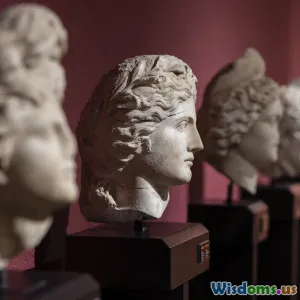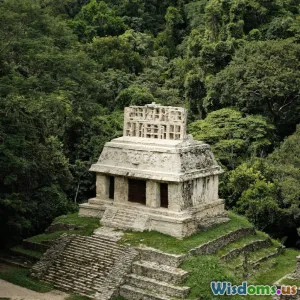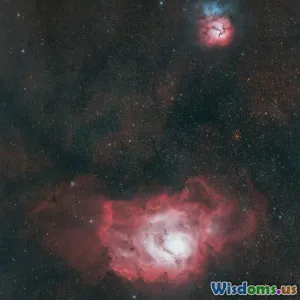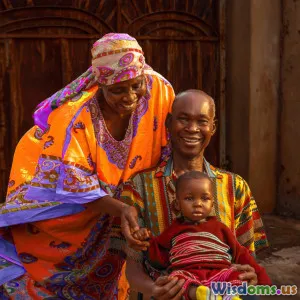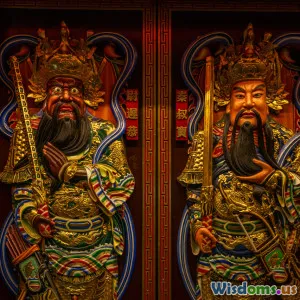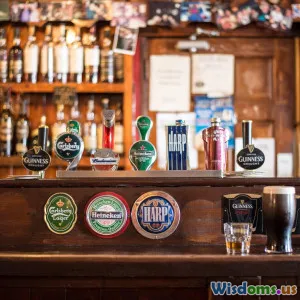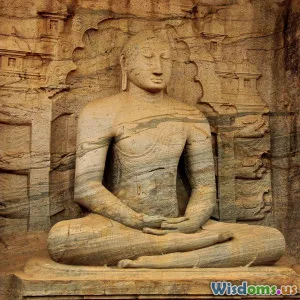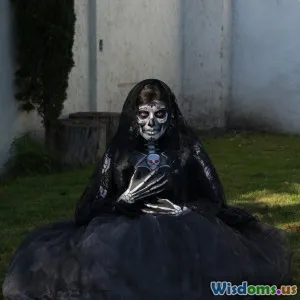
Could You Survive a Journey in Xibalba Myth
9 min read Explore the perilous journey through Xibalba, the Maya underworld, and learn what it truly takes to survive its trials. (0 Reviews)
Could You Survive a Journey in Xibalba Myth?
The Maya civilization was renowned not only for its impressive cities, mathematics, and astronomy but also for its rich and complex mythology. Among the most haunting and mysterious of these is Xibalba, the Maya underworld. According to legend, it was a dark realm ruled by sinister Lords of Death where souls faced terrifying trials after death. But what was this journey truly like, and could a living person—let alone a soul—survive this voyage? In this article, we’ll delve in-depth into the nature of Xibalba, explore the challenges faced by the dead, and reflect on the role this myth played in shaping Maya beliefs about life, death, and the afterlife.
The Origins and Meaning of Xibalba
Xibalba, which translates roughly to «Place of Fear» in the K'iche' Maya language, was thought to be an underground world where the spirits of the dead traveled after passing from the mortal realm. Rather than a place of eternal punishment or bliss, it was a dangerous and treacherous domain filled with nightmarish challenges.
Civilizations surrounding the Maya culture—such as the Zapotec and Mixtec—had similar conceptions of layered underworlds, but Maya mythos is the most elaborate, especially recorded in the Popol Vuh, their sacred book.
The underworld wasn’t only a site of danger; it was also connected to the cyclical nature of life. Xibalba’s association with death was crucial for rebirth and renewal beliefs.
Geography of Xibalba: A Labyrinth of Trials
Unlike the notion of an underworld as an eternal firepit, Xibalba was imagined as a maze-like realm with multiple layers and terrifying houses managed by devious Lords of Death. According to Popol Vuh, the path to Xibalba is fraught with intimidation and deceit.
The Lords of Xibalba
There were 12 Lords of Death, each embodying aspects of fear, death, pestilence, and decay. Some of the most infamous were:
- One Death (Sipakna) — Lord of painful death and suffering.
- Seven Death (Chamiabac) — Associated with paralysis and disease.
- Darkness (Cuchumaquic) — Master of obscurity and fear.
These rulers set deadly challenges to souls attempting to pass through their domains.
The Five Houses of Xibalba
Traveling souls had to endure each 'house', where unique tests awaited:
- Dark House: Complete darkness intended to disorient and terrify travelers.
- Jaguar House: Filled with roaring beasts threatening to devour intruders.
- Bat House: Swarming with bats and impending danger.
- Cold House: A smothering frozen environment testing endurance.
- Fire House: Intense heat and fire pits posing imminent death.
Success or failure in these houses determined if a soul reached the afterlife or was destroyed forever.
Could a Living Person Survive These Trials?
Maya myths recount various tales where heroes or shamans journeyed to Xibalba and either escaped or conquered elements of the underworld. The Hero Twins, Hunahpu and Xbalanque, are the most famous figures who traveled to Xibalba to defeat the Lords of Death and avenge their father. Their story is pivotal in illustrating both the dangers and the possibility of triumph.
The Hero Twins’ Journey
Unlike ordinary souls, the twins navigate trickery using wit rather than brute strength: They defeat the Lords via intelligence, illusion, and cunning. For example, to pass through the deadly houses, the twins create illusions—pretending to freeze in the Cold House or to burn in the Fire House—to survive.
But the odds were incredibly slim for others. The underworld was a place where even subtle mistakes could prove fatal.
Real-World Analogies
Turning to anthropology, Xibalba reflects natural hazards and cultural fears:
- The terrifying challenges mirror extreme experiences such as illness, natural disasters, or the psychological states related to death.
- Rituals where shamans symbolically descend into underworld realms aim to reconcile life with death. Such rites are still prevalent in cultures worldwide about death’s mysteries.
So, although a real person wouldn't survive being literally subjected to freezing conditions, fire pits, or never-ending darkness, symbolic journeys and inner spiritual survival are represented in these myths.
Lessons from the Myth of Xibalba
Life, Death, and Transformation
Xibalba symbolizes the perilous transition from life to death—a journey fraught with uncertainty and fear. The souls' fate depended largely on how prepared they were to face death's realities.
As anthropologist Michael D. Coe states, “Death in the Maya imagination was a passage, a trial. To live well was to prepare oneself for this ultimate journey.”
The Power of Mind and Spirit
The story strongly emphasizes mental acuity and spiritual resilience over mere physical strength. The Hero Twins’ victories illustrate that wit, bravery, and adaptability can overcome even death itself.
Cultural Endurance and Memory
Xibalba’s myth has persisted because it offers profound commentary on human mortality and the cosmic order. Its influence endures in modern storytelling, art, and regional cultural ceremonies that honor ancestors.
Could You Survive? A Thought Experiment
Considering what the myth depicts, survival hinges on preparedness, inner strength, and wisdom. Literal survival may be impossible given the brutal environments symbolized by the five houses and lords. However, through metaphor, one “survives” by facing fears, acknowledging mortality, and transcending boundaries.
Ask yourself:
- Would you have the courage to confront darkness without panic?
- Could you outwit unknowable dangers through quick thinking?
- Are you prepared to endure profound suffering for a chance at transformation?
The spirit journey through Xibalba teaches us resilience—not as a physical act but as a mindset, reminding us to embrace life fully while acknowledging the inevitability of death.
Conclusion
The myth of Xibalba holds a powerful place in Maya cosmology—a vivid symbol shrouded in mystery, fear, and wisdom. While few, if any, souls were expected to marry the horrors of the Lords of Death and those treacherous houses, the myth reminds us that survival transcends the physical. It’s a journey of the mind and spirit, reverberating across cultures and epochs.
Whether interpreted literally or metaphorically, this ancient tale urges modern readers to ponder mortality, courage, and the battle against fear itself.
Would you survive a journey in Xibalba? The true answer lies not in the underworld’s darkness but within the depths of the human spirit.
References:
- Thompson, J. Eric S. Maya History and Religion. University of Oklahoma Press, 1970.
- Tedlock, Dennis, trans. Popol Vuh: The Definitive Edition of The Mayan Book of The Dawn of Life and the Glories of Gods and Kings. Simon & Schuster, 1996.
- Coe, Michael D. The Maya. Thames & Hudson, 2011.
Rate the Post
User Reviews
Other posts in Mesoamerican Mythology
Popular Posts










